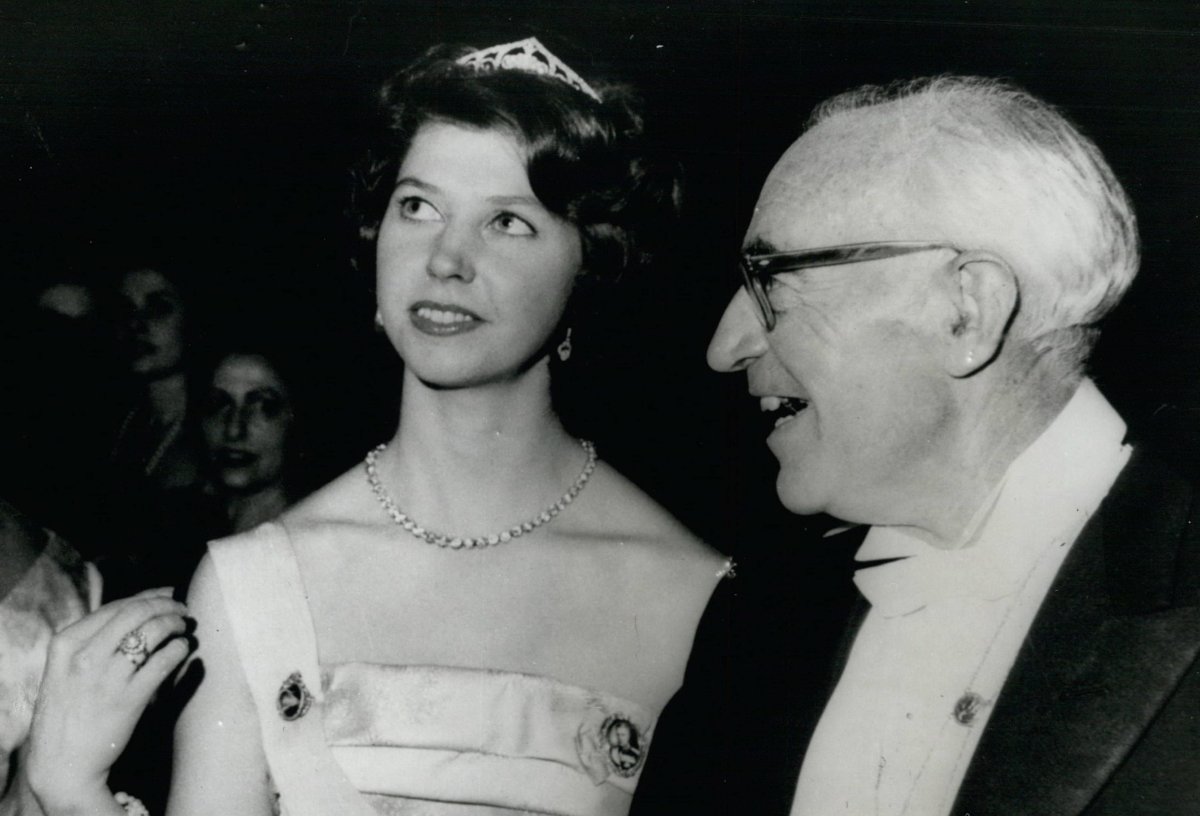
Today, the Swedish royal family celebrates the birthday of Princess Désirée, the third of the four older sisters of King Carl XVI Gustaf. Although she married a commoner and lost her royal style as a result, Désirée has continued over the years to attend gala functions in Sweden, often wearing a petite diamond tiara with links to a fascinating royal lady from two generations earlier.
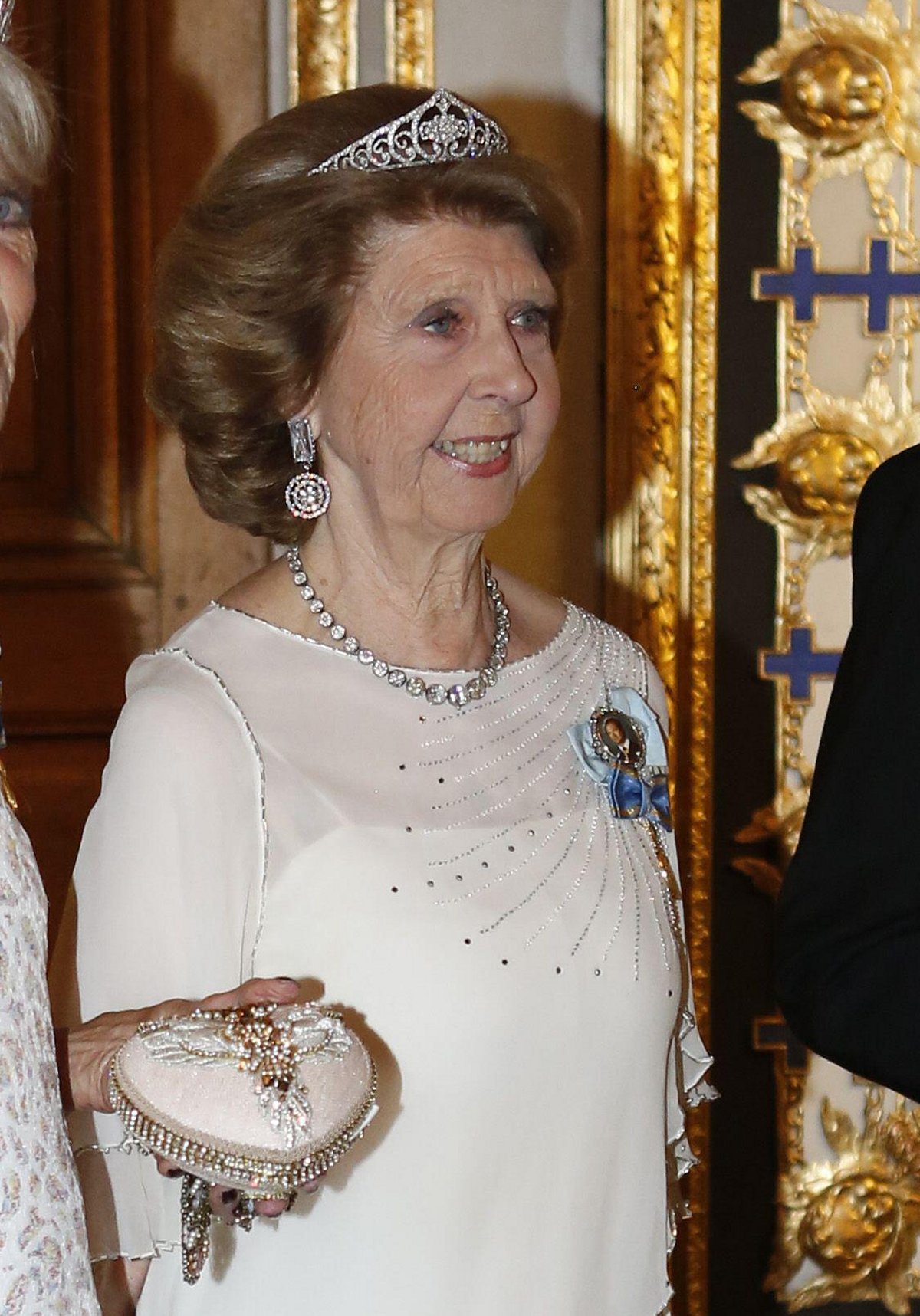
Nine years ago, when King Carl XVI Gustaf of Sweden celebrated his 70th birthday, members of the extended Swedish royal family were on hand for a gala banquet in his honor at the Royal Palace in Stockholm. The King is the fifth and youngest child of Prince Gustaf Adolf and Princess Sibylla of Sweden, but he was able to inherit the throne ahead of all four of his sisters because the law at the time prioritized male heirs. (The law was changed in 1980, making the eldest child of the monarch heir to the throne regardless of gender.)
The King’s sisters, known as the “Haga Princesses,” have remained a tight-knit unit over the years, and all four of them were present at his 70th birthday gala that April. Princess Margaretha sparkled in her Aquamarine Kokoshnik, Princess Birgitta dazzled in the Baden Fringe, and Princess Christina wore the family’s petite Aquamarine Bandeau. The third princess of the four, Princess Désirée, stepped out in a special tiara that has been her personal property for more than half a century: a diamond scroll tiara that once belonged to their step-grandmother, Queen Louise of Sweden.
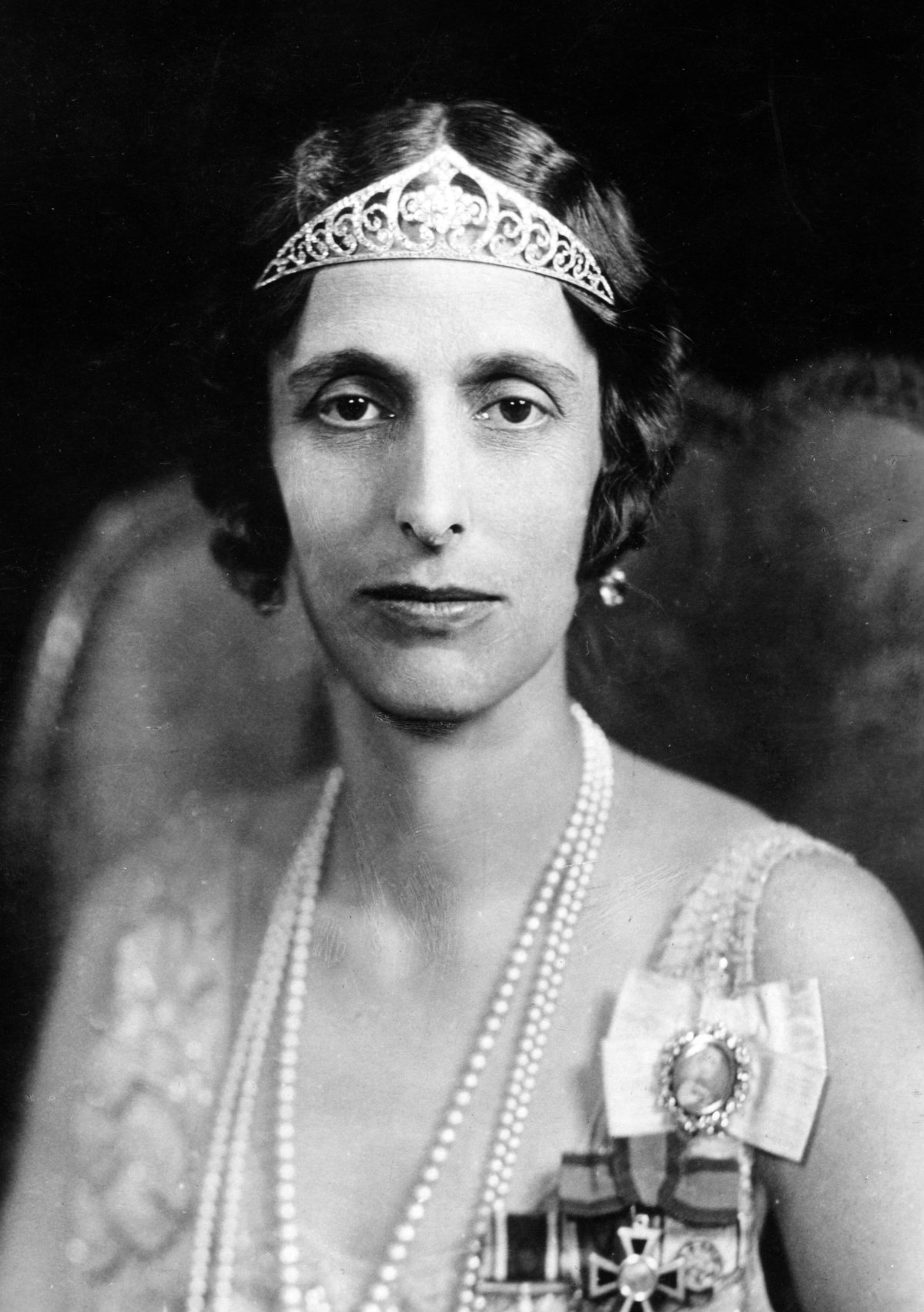
Queen Louise was born Princess Louise of Battenberg, but she became Lady Louise Mountbatten when her family pledged their loyalty to Britain and relinquished their German titles during World War I. The unconventional royal lady led a fairly quiet life until 1923, when she realized that the Crown Prince of Sweden was interested in courting her. Thirty-four-year-old Louise, who had endured a string of failed romances, had accepted that she would probably never marry. She was stunned when Crown Prince Gustaf, a 40-year-old widower with five children, asked for her hand in marriage. Ultimately, she decided to accept his proposal.
Gustaf and Louise were married in London in November 1923. Their nuptials made Louise a Crown Princess, and bejeweled gifts flooded in. Among these were at least three tiaras: Queen Sofia’s Tiara, a gift from her new father-in-law, King Gustaf V of Sweden; an “aquamarine hair bandeau” from her sister and brother-in-law, Prince and Princess Andrew of Greece and Denmark; and a “delicate diamond bandeau” from her brother and sister-in-law, Lord and Lady Louis Mountbatten.
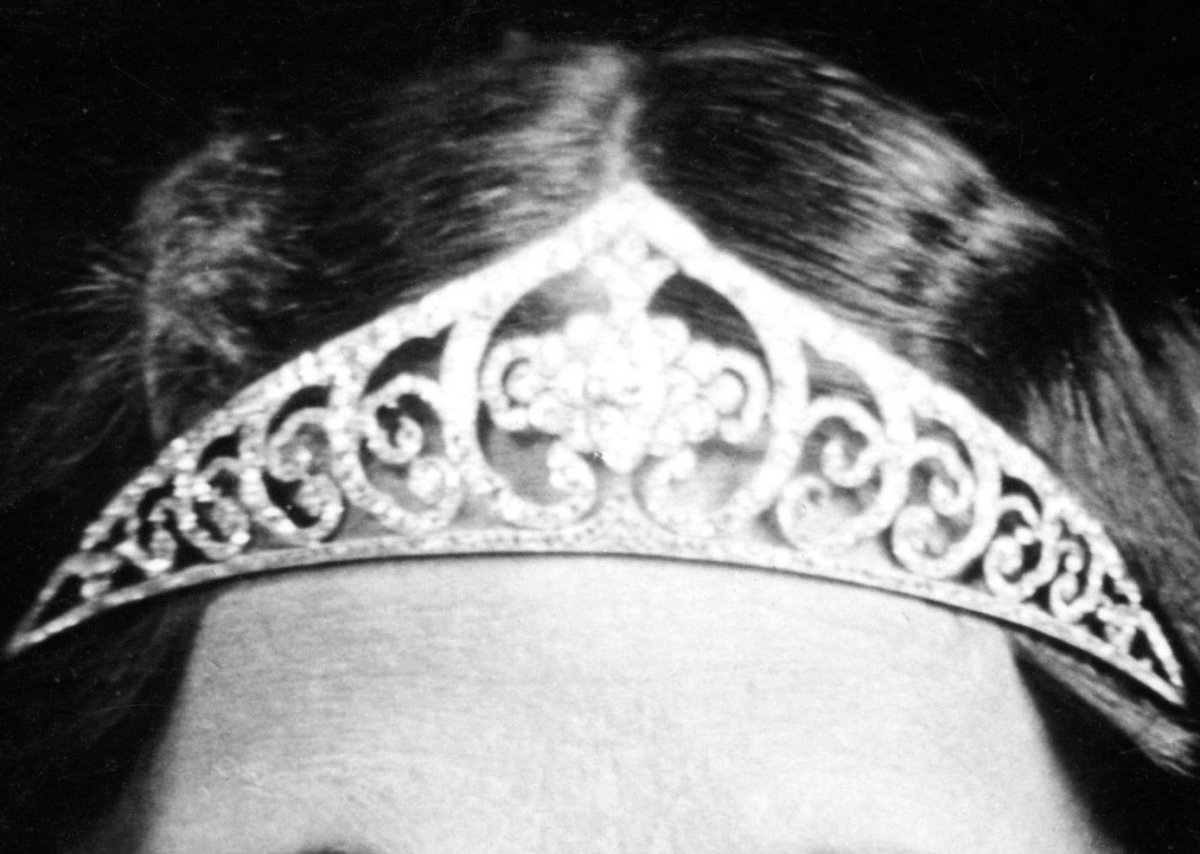
I tend to believe that the diamond bandeau-style tiara given to Louise by Louis and Edwina is this diamond scroll tiara. Louise wore it low across her forehead, in the style popular during the 1920s, in the early years of her marriage. As the years went by, and her mother-in-law’s passing officially made her the senior lady at the Swedish court, she became fonder of the grand tiaras from the royal vaults, including the Braganza Tiara, the Baden Fringe, and the Leuchtenberg Sapphire Tiara. The smaller jewels from the early days of her Swedish royal life were largely consigned to the vaults.
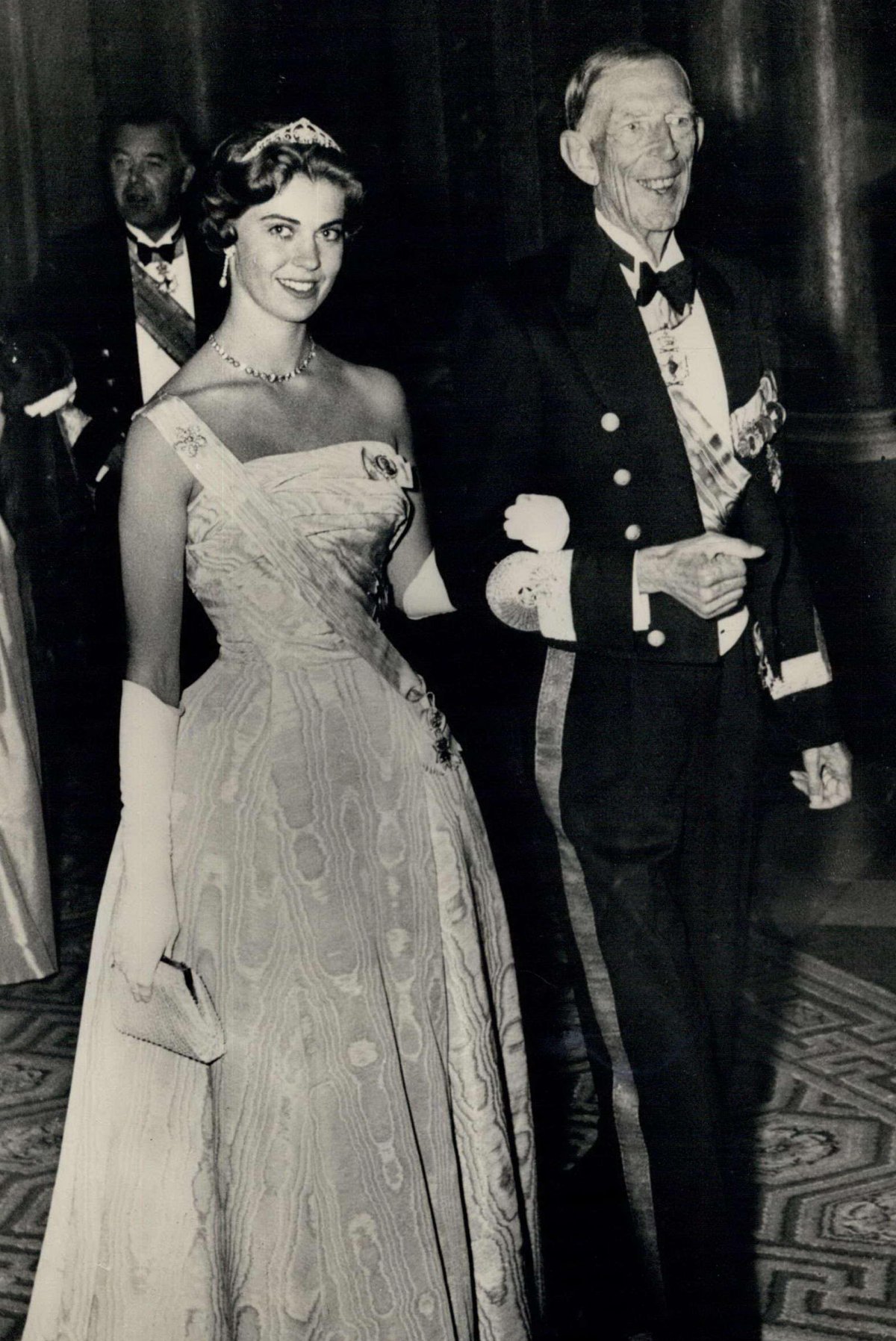
Until, that is, there were suddenly four young princesses in Sweden in need of tiaras. Louise’s eldest stepson, Prince Gustaf Adolf, married Princess Sibylla of Saxe-Coburg and Gotha in 1932. Over the next decade, they became the parents of four daughters: Princess Margaretha, Princess Birgitta, Princess Désirée, and Princess Christina. A son and heir, Prince Carl Gustaf, completed the family in 1946, but tragedy struck less than a year later, when Prince Gustaf Adolf was killed in a plane crash.
In the years that followed, Princess Sibylla’s five children remained very close to their grandparents, Gustaf and Louise, who became King and Queen of Sweden in 1950. As the princesses came of age and began attending gala events with their grandparents and their mother, Gustaf and Louise helped to ensure that they had the tiaras they needed for each glittering occasion. When the eldest, Princess Margaretha, turned 18 in 1952, she began wearing the little diamond scroll tiara that belonged to Queen Louise. Above, she wears the diamond tiara during a state banquet in Stockholm in May 1957.
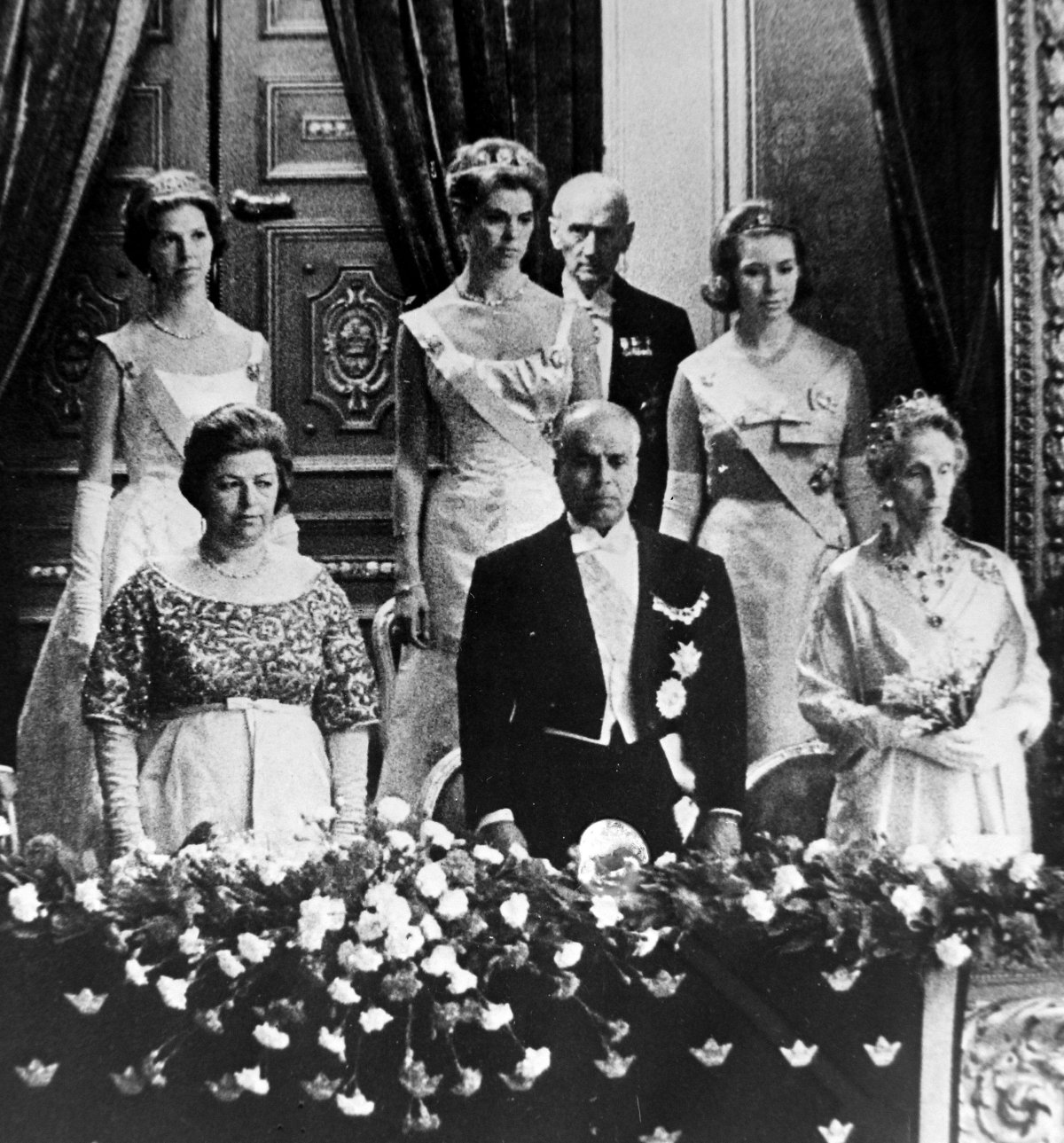
All four of the Haga Princesses would end up wearing Queen Louise’s Diamond Tiara for various gala occasions, but the one who quickly became most associated with the jewel was the third sister of the quartet, Princess Désirée. She began attending gala functions with her grandparents, mother, and sisters in 1956. Above, she wears the diamond tiara for a gala performance during a state visit from the President of Tunisia to Sweden in June 1963.
Désirée is standing on the left in the second row; beside her, Margaretha wears the Diamond Four Button Tiara, and on the right, Christina wears Queen Louise’s Aquamarine Bandeau. In the front row, beside President Habib Bourguiba and his wife, Wassila, Queen Louise wears the tiara and jewels from the Leuchtenberg Sapphire Parure.
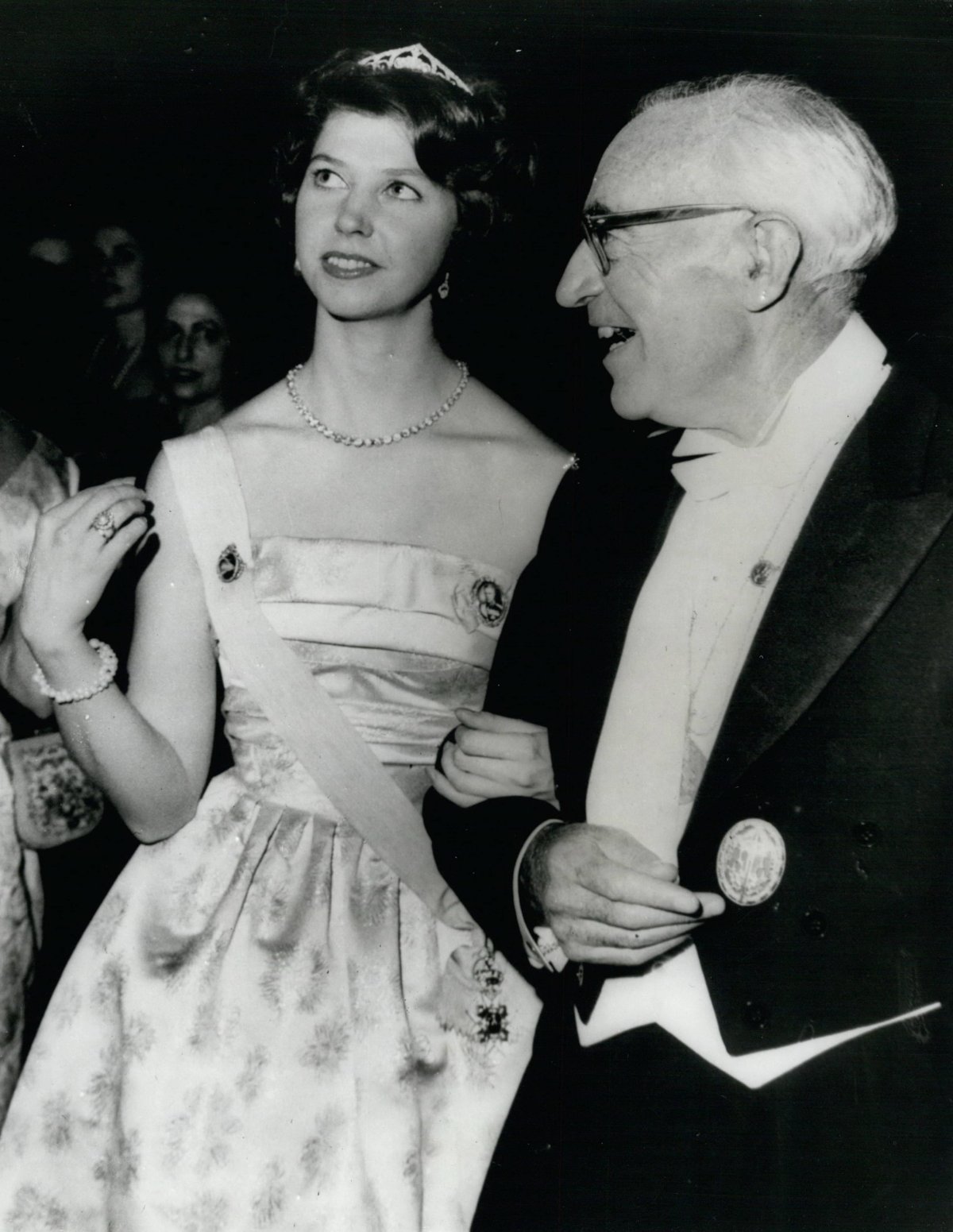
Later that year, Princess Désirée also wore Louise’s diamond tiara for the Nobel Prize ceremony and banquet in Stockholm. By this time, rumors were swirling that the 25-year-old princess was secretly engaged to be married. A week after the Nobel celebrations, the Swedish court announced that Désirée would marry a Swedish aristocrat and landowner, Baron Niclas Silfverschiöld. When they wed in June 1964, King Gustaf and Queen Louise reportedly presented the diamond scroll tiara to Désirée as a wedding gift.
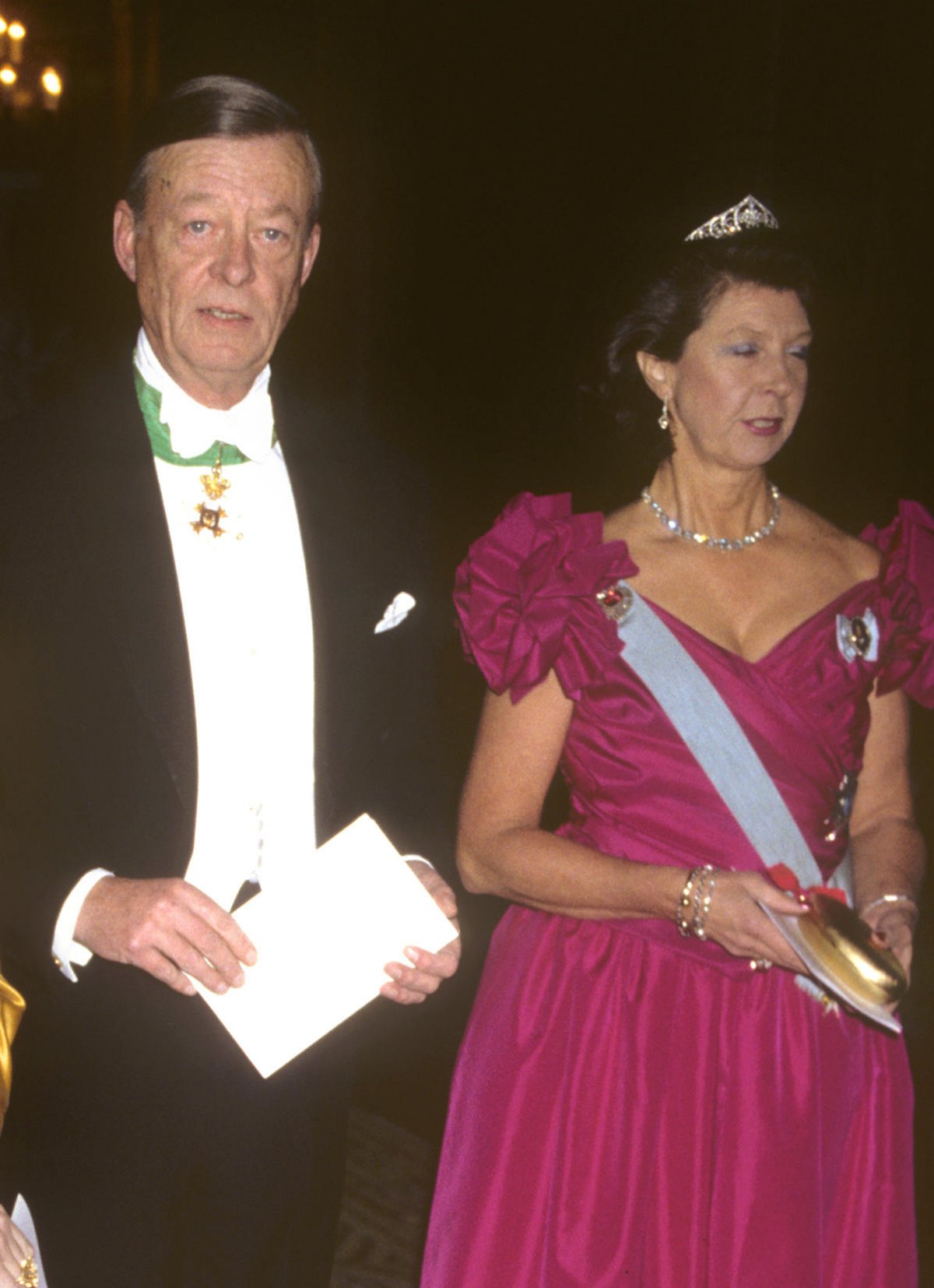
Through her marriage to a non-royal man, Désirée lost her royal style and her place in the line of succession. Even so, Désirée and Niclas often attended royal events in a non-official capacity over the years, especially as the number of adults available to represent the royal family dwindled. During many of those outings, Désirée wore the diamond scroll tiara given to her by her grandparents. She wears the tiara above in a photo taken during the King’s Dinner for Nobel Prize laureates at the Royal Palace in Stockholm in December 1991.

And here, just a few months later, Désirée wears the tiara with a loud, bright floral evening gown for another glittering occasion: a banquet during a state visit from King Harald V of Norway, who had recently acceded to the throne after the death of his father. Also pictured here, wearing the Diamond Four Button Tiara, is Princess Christina. You’ll note that both of the royal women are also wearing the sash and star of the Order of St. Olav, as well as their brother’s Royal Family Order.
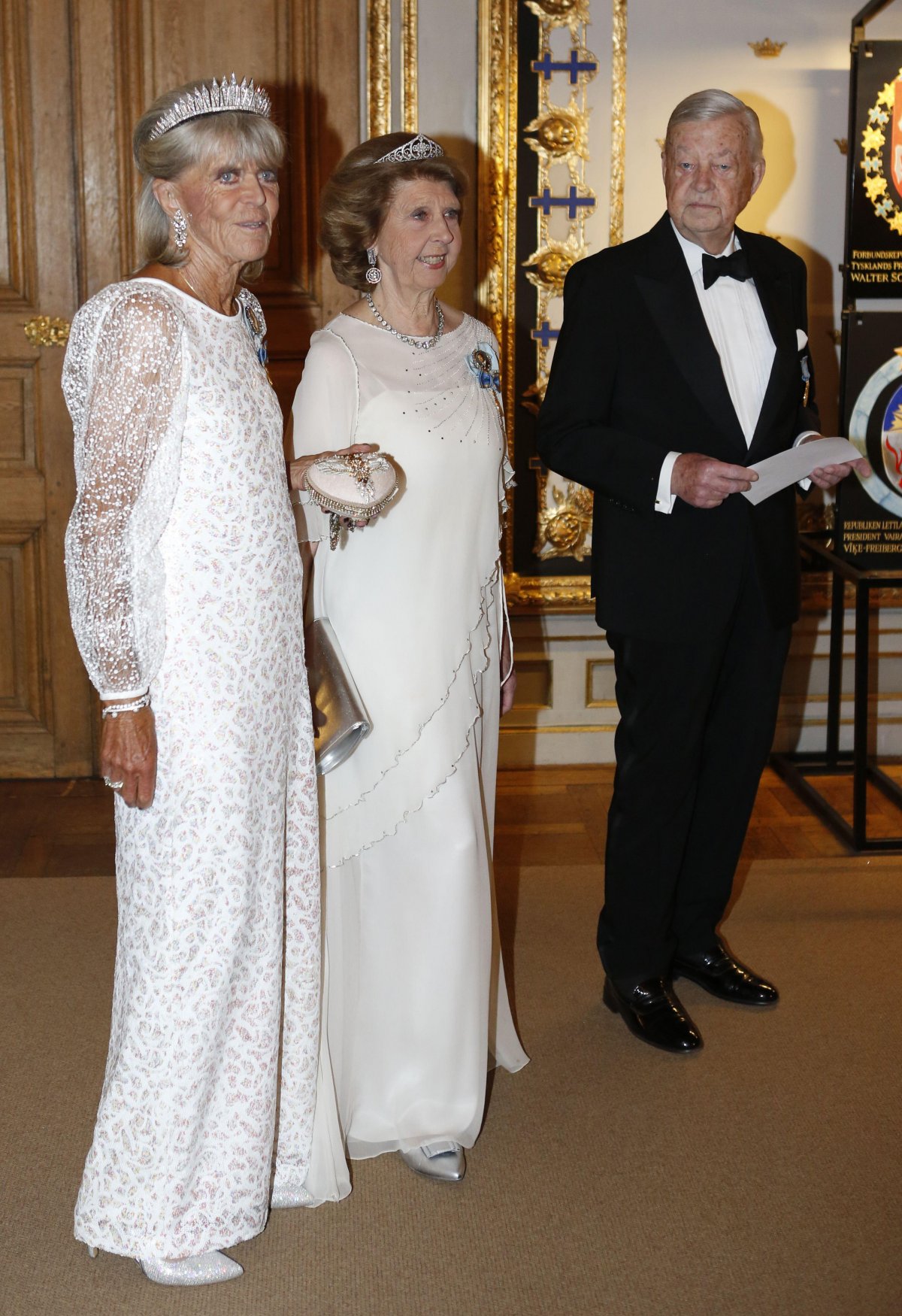
One of Désirée’s most recent appearances in the diamond scroll tiara came at King Carl XVI Gustaf’s birthday gathering in April 2016. In the nine years since, she has mourned the passing of her husband and one of her sisters, Princess Birgitta, and she has dealt with some significant health problems of her own.
In recent years, her eldest sister, Princess Margaretha, made the decision to make her family gift tiara available in the royal vaults for the use of other members of the family. It will be interesting to see what Désirée decides to do with the scroll tiara: leave it to the main line of the royal family, or retain it as part of the legacy that will be inherited by her own son and daughters, hopefully some time far in the future.
Leave a Reply
You must be logged in to post a comment.